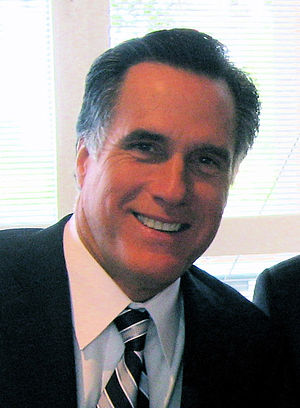
The Republican National Convention kicks off at Florida’s Tampa Bay Times Forum today, a four-day extravaganza of brand and reputation management. A recent New York Times article looks at how the party plans to use the convention to “accomplish something a year of campaigning has failed to do: paint a full and revealing portrait of who Mitt Romney is.” Romney’s team will aim to champion his business career and religion and “overcome perceptions that Mr. Romney is stiff, aloof and distant,” according to the Times.
Branding Experts Weigh In
Embracing those two core facets of Romney’s professional and personal life—his private sector experience and devout Mormon faith—could go a long way toward portraying him as a well-qualified and compassionate candidate as opposed to “Romney the Unknowable.” In a Harvard Business Review blog post branding strategist Dorie Clark recently said that Romney’s “selection of Paul Ryan as his vice presidential running mate is, from a branding perspective, a masterstroke.” The decision “draws attention to Romney’s North Star: no one has ever, ever doubted his belief in the salutary power of business,” Clark explains, adding that “when your brand is in doubt, it pays to play to your strengths.” The convention will give Romney a chance to build on that move and cement his brand. “It needs to be credible and defensible, but also aspirational, something Americans and the media believe and can believe in,” says branding strategist Howard Breindel.
Romney’s team will need to tread carefully, though, when it comes to presentation. While they have told the Times that they are “conscious of trying to make it not seem grandiose” and have crafted designs “to convey warmth, approachability and openness,” the convention’s $2.5 million stage and its 13 massive video screens have already been mocked as “smoke and mirrors” and an attempt to “humanize the Romneybot.” If such criticism rings true, Romney’s own hand in the convention’s design could make him seem even more out of touch.
Social Media Key to Convention
Social media, on the other hand, is allowing Romney and his party to reach beyond the pageantry and connect more directly with the millions of Americans who will be following the convention—a strategy University of North Carolina journalism professor Daniel Keiss told the Associated Press will be “viewed as more credible and more authentic.” RNC organizers have teamed up with Google to create a “customized YouTube page that will carry both the convention livestream and key videos, but will also have space for the Twitter conversation around the convention and for social metrics indicating what people are talking about,” according to BuzzFeed. While a recent Pew Research poll found that Obama leads Romney when it comes to social media numbers, Republican digital strategist Vincent Harris points out that “more people are actually interacting with content on Mitt Romney’s page.” The RNC’s YouTube-based “Convention Without Walls” could capitalize on that engagement while also helping prevent the party from losing control of the conversation.
The Republican National Convention will be a critical moment in this year’s presidential race. To maximize its effect, the party is working to perfectly balance of pomp with authenticity, and carefully crafted messages with the unscripted social media. Unlike in past conventions, the elaborate video displays may prove to be less important than the multitude of smaller screens glowing in front of Americans across the country.


